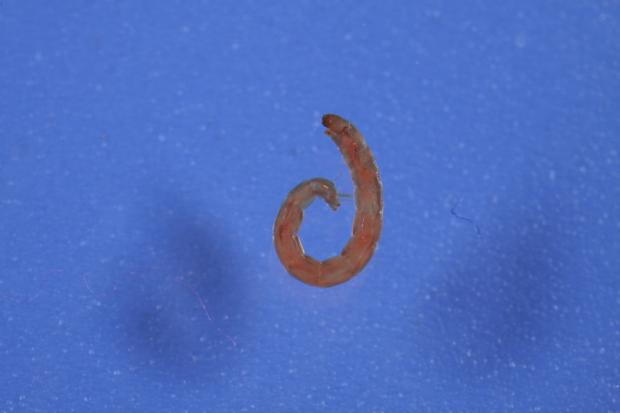The African midge, Polypedilum vanderplanki, can do all that and an international team deciphered the genetic mechanism that makes it invulnerable to these harsh conditions.
The midge is capable of anhydrobiosis, a unique state that allows an organism to survive after losing almost all of its body water, along with other severe conditions, such as extreme temperatures ranging from 90°C to -270°C, vacuums and high doses of radiation; all of which would be lethal to most other life forms.
The midge found in northern Nigeria lives in an environment where the dry season lasts for at least six months and droughts can last up to eight months. By the time eggs have hatched and larvae have developed, the pools of water they breed in have dried up. However these dried larvae can survive in this dehydrated state for more than 17 years.

Credit: OIST
“This is a very interesting kind of phenomena,” said Prof. Noriyuki Satoh of the Okinawa Institute of Science and Technology. “The first descriptions of this midge were more than 60 years ago… But serious research started only ten years ago.”
While there are other organisms which are anhydrobiotic, what makes this midge unique is its genetic makeup. Comparative analysis between P. vanderplanki and one of its closer relatives, Polypedilum nubifer, shows significant variations in the genes connected with anhydrobiosis. The results of the study show that many of the genes P. vanderplanki possess are exclusive to its genetic code and not something passed down from an ancestral species nor are they shared by its close relatives.
This means that the midge is not just unique, but an excellent resource for study as those exclusive gene sequences possessed by P. vanderplanki are readily identifiable in gene clusters known as Anhydrobiotic Related gene Islands (ARId’s).
The extent of dehydration that these midges can withstand can very badly damage DNA. However organisms like P. vanderplanki have the ability to make significant structural repairs to their DNA after being rehydrated. Another collaborator, Dr. Takahiro Kikawada of the National Institute of Agrobiologial Sciences in Tsukuba, Japan points to interesting previous results published in PLOS ONE, where larvae had restored physiological activity within an hour after rehydration, and nuclear DNA restoration between 72 and 96 hours after rehydration.
The potential applications for such genes could revolutionize the way biological specimens and samples are stored and transported around the world. The possible infusion of such genes with medical samples such as fertilized eggs and blood samples, would give researchers greater flexibility in contingency plans for long term storage.
The transportation of very sensitive biological samples between laboratories could be made dramatically easier and more cost effective in dehydrated states.
Link: http://www.nature.com/ncomms/2014/140912/ncomms5784/full/ncomms5784.html. Source: OIST





Comments